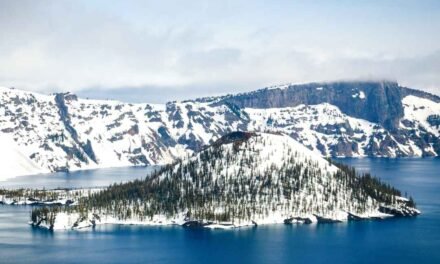Overview
The National Park of American Samoa is a unique and remote tropical paradise located on the islands of Tutuila, Ofu, and Ta‘ū in the U.S. territory of American Samoa. Spread across these three islands, the park boasts lush rainforests, pristine beaches, vibrant coral reefs, and rugged volcanic landscapes, offering visitors an unforgettable experience. Established in 1988, the park aims to protect the region’s unique ecosystems and preserve the rich Samoan culture.
The National Park of American Samoa Location
The National Park of American Samoa is located in the South Pacific, approximately 2,600 miles (4,184 kilometers) southwest of Hawaii. The park is spread across three of the territory’s islands: Tutuila, Ofu, and Ta‘ū. The largest and most accessible portion of the park is on Tutuila, the main island of American Samoa, while smaller sections can be found on Ofu and Ta‘ū, which are accessible by small plane or boat.
The National Park of American Samoa Things to Do
There is a wide variety of activities available to visitors of The National Park of American Samoa, from hiking and snorkeling to cultural experiences and wildlife watching. Some popular activities include:
The National Park of American Samoa Itineraries
3-Day Itinerary
Day 1:
Day 2:
Day 3:
7-Day Itinerary
Days 1-3:
Day 4:
Day 5:
Day 6:
Day 7:
Best Season to Visit The National Park of American Samoa
The best time to visit The National Park of American Samoa is during the dry season, which typically runs from May to October. During this period, you can expect warm temperatures, lower humidity, and less rainfall, making it ideal for outdoor activities such as hiking, snorkeling, and beachcombing. However, the park is open year-round, and even during the wet season (November to April), there are often sunny days suitable for exploring the park.
The National Park of American Samoa Weather
American Samoa experiences a tropical climate with warm temperatures and high humidity throughout the year. The average temperature ranges from 75°F to 85°F (24°C to 29°C), with the warmest months being December to March. Rainfall is common, with the wet season (November to April) experiencing more frequent and heavier rainfall than the dry season (May to October). Despite the rainfall, the park is still a beautiful destination year-round, and sunny days are common even during the wet season.
The National Park of American Samoa Hotels and Camping
While there are no hotels or campgrounds within the park itself, there are a variety of accommodations available on the islands of Tutuila, Ofu, and Ta‘ū. On Tutuila, you can find hotels, guesthouses, and bed and breakfasts in and around the Pago Pago area. Ofu and Ta‘ū have more limited options, with guesthouses and homestay accommodations available in the local villages.
Camping is not permitted within the park, but there are some campgrounds and beach fales (traditional open-air Samoan huts) available outside the park boundaries on Tutuila and Ta‘ū.
The National Park of American Samoa Restaurants
There are no restaurants within the park itself, but you can find a variety of dining options on the islands of Tutuila, Ofu, and Ta‘ū. Many restaurants serve traditional Samoan dishes, such as palusami (taro leaves cooked in coconut cream) and oka (raw fish marinated in citrus and coconut milk). In the larger towns, you can also find international cuisine, such as American, Chinese, and Italian.
The National Park of American Samoa Wildlife and Plants
The National Park of American Samoa is home to a diverse array of wildlife species and unique plant life. Some notable species include:
The National Park of American Samoa History
The National Park of American Samoa was established in 1988 to protect and preserve the region’s unique ecosystems and the rich Samoan culture. The park’s creation was the result of a collaboration between the U.S. National Park Service and the American Samoan government, which signed a 50-year lease agreement for the parklands.
The islands of American Samoa have a long history of human habitation, dating back over 3,000 years. The native Samoan people, known as the Tagata Ma‘o, have a rich cultural heritage rooted in their connection to the land and the sea. Throughout the park, you can find evidence of this history in the form of ancient stone structures, petroglyphs, and traditional villages.
The arrival of Europeans in the 18th century and the subsequent colonization by the United States in the early 20th century brought significant changes to the region, including the introduction of new plant and animal species and the disruption of traditional lifestyles. The establishment of the park aimed to help preserve the unique natural and cultural heritage of the islands and ensure that future generations can continue to experience and learn from this rich history.
The National Park of American Samoa Geology
The islands of American Samoa are volcanic in origin, created by the Pacific tectonic plate’s movement over a hotspot in the Earth’s mantle. The park’s geology is characterized by rugged volcanic landscapes, including steep cliffs, rocky coastlines, and lush rainforests. On Ofu and Ta‘ū, you can also find remnants of ancient coral reefs that have been uplifted above sea level due to tectonic activity.
The park’s volcanic geology provides a unique habitat for a wide range of plant and animal species, many of which are found nowhere else in the world. This diverse ecosystem, combined with the region’s isolation and unique Samoan culture, makes The National Park of American Samoa a truly special destination for visitors.
Conclusion
The National Park of American Samoa offers visitors an unforgettable experience, with its stunning landscapes, pristine beaches, vibrant coral reefs, and rich cultural heritage. Whether you’re exploring the lush rainforests of Ta‘ū, snorkeling in the crystal-clear waters of Ofu, or learning about traditional Samoan culture on Tutuila, the park provides a unique and memorable adventure for all who visit. By following this comprehensive guide, you’ll be well-prepared to make the most of your time in this remote and enchanting South Pacific paradise.





